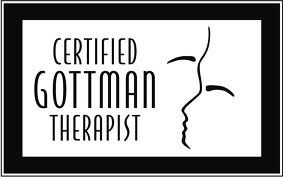A Behavioral Approach to Treating Chronic Pain and Medical Problems
In the June 2 edition of The New York Times, the article “Pain Pills Add Cost and Delays to Job Injuries” Barry Meier points out that powerful drugs such as OxyContin actually delay recovery from injuries that occur at work. But beyond the financial cost of using opioid painkillers to treat back strain and other pain problems, the human costs are heartbreaking.
I have treated chronic pain since I first began working as a psychotherapist. Using biofeedback, cognitive therapy, and relaxation training, I worked with medical patients referred by their physicians. The people I treated were on multiple medications from many different classifications within pharmacology. Sedatives were combined with opioids, sleeping pills, antidepressants, and mood stabilizers.
In the pre-digital age, where medical records were in the form of a paper chart, these patients had the thickest charts, often in several volumes. Pain patients can be docile, following doctor’s orders to take the pills exactly as prescribed. But in chronic pain, the tolerance to these strong medications grows. Increasing the drugs’ strength and frequency may not cure or even lessen pain; in fact, the pain is often made worse. In medical jargon, the pain becomes iatrogenic—meaning that the treatment causes the problem.
Over time, the side effects of taking opioids lead to a plethora of new medical and psychological problems. These drugs cause lethargy, drowsiness, depression, and irritability. The lifestyle behaviors that would ameliorate pain, such as exercise, relationships, and engagement in pleasurable activities, are difficult to do if one is bedridden due to stupor, further delaying recovery.
The cost to the patient’s family is also a big problem. The reduced income stresses everyone and reduces the patient’s self-esteem. The healthy partner becomes a caregiver, putting a strain on sex and intimacy. Pain patients take on what I call “pain behaviors” such as wincing, grimacing, and grunting, signals that often look like helpless dependency. Caregivers’ own helplessness to do anything, creates burnout, leading them to ignore patients’ suffering. Resentment grows on all sides. Marriage counseling is often warranted to help partners adapt to their spouses’ pain and to learn new ways of coping.
When I started treating chronic pain, Behavioral Intervention was the treatment model. Self-care was the cornerstone of healing, with medications as an adjunct. My work was to help patients see that being in bed most of the day and night was robbing them of their life. By suggesting and encouraging gradual exercise and teaching meditation and relaxation, I could help them begin to engage in life again. While working at Kaiser Hospital, I conducted research for my doctoral dissertation that showed a significant reduction in medical costs for patients who had completed short-term behavioral therapy for their chronic pain. The treatment was effective for reducing medical costs for up to five years after the therapy was concluded.
In addition to medical costs, the psychological literature has focused on the “secondary gain” of chronic pain. This refers to the usually unconscious benefits one derives from pain. This could come from worker’s compensation benefits, attention from family, or legal compensation from an injury incurred at work or an accident, but also the insidious creep of opioid dependence.
Chronic pain patients often fall through the cracks of the medical and legal system. Lawyers get involved. Settlements get delayed due to the difficulty getting appointments with doctors, medical examiners, and the many ancillary people involved in the care of these folks. This added complexity prolongs recovery thereby increasing the toll of chronic pain on the patient’s life.
A unified team approach is necessary to prevent this kind of delay. Delays cost in big ways. As the Times article states, insurers spend $1.4 billion a year on narcotic painkillers. If these medications are used too early, too frequently, or for too long, the disability payouts and expenses will end up delaying return to work and in many cases will lead to permanent disability. In 2010, prescribed opioids cost $252 million in California. This cost is passed onto the taxpayers, who underwrite coverage for public employees like firefighters and police officers.
In this time of budget cuts, and controversy regarding pension plans we need to work in a systematic way to help the patient learn to cope with pain without the use of addictive medications. This will alleviate the burden on many fronts. Psychologists have had a role in treating patients with medical conditions for many years, yet referrals for mental health treatment have been affected because of to the many restrictions insurance companies put on providers, and limited coverage for this form of treatment.
One of the most effective treatment approaches is Mindfulness-Based Cognitive Therapy and Stress Reduction. This approach often utilizes a group format so that coping techniques can be taught efficiently. A growing body of research supports the use of meditation, and acceptance, in the treatment of medical problems. Psychologists can diagnose other problems a patient may be experiencing such as depression and anxiety, that may be compounding recovery. I often make recommendations for couples therapy. A comprehensive team approach is the most effective way to help a patient recover so that use of addictive medications will not impede a return to living life well, despite recurrent medical problems.


 Anticipating an empty nest, I decided to join the Contra Costa Psychological Association’s Board of Directors. My twin daughters were in their final year of high school, and instead of the anxiety that usually comes with that impending transition (or perhaps because of it), I decided to get more involved in my profession. Years ago, my husband and business partner Dr. David O’Grady, was president of the CCPA board. During those days when our daughters were young, I felt the usual work-life balance conflict that consumes so many working mothers. I would find myself questioning David’s decision to devote the little free time he had to the Contra Costa Psychological Association. For me, I was either seeing as many clients as I could during the day, or I was at home, making up for the time I devoted to working. Because we were both in private practice, we were fortunate to be able to set our own schedules, so childcare was minimized. Nonetheless, it was still completely unfathomable to me that David would choose to give away his time, especially to the profession. After years of graduate school, internships and fellowships (e.g., working for free, or almost free), it was inconceivable to me that anyone would give yet more time to the profession that had taken so much from us already.
Anticipating an empty nest, I decided to join the Contra Costa Psychological Association’s Board of Directors. My twin daughters were in their final year of high school, and instead of the anxiety that usually comes with that impending transition (or perhaps because of it), I decided to get more involved in my profession. Years ago, my husband and business partner Dr. David O’Grady, was president of the CCPA board. During those days when our daughters were young, I felt the usual work-life balance conflict that consumes so many working mothers. I would find myself questioning David’s decision to devote the little free time he had to the Contra Costa Psychological Association. For me, I was either seeing as many clients as I could during the day, or I was at home, making up for the time I devoted to working. Because we were both in private practice, we were fortunate to be able to set our own schedules, so childcare was minimized. Nonetheless, it was still completely unfathomable to me that David would choose to give away his time, especially to the profession. After years of graduate school, internships and fellowships (e.g., working for free, or almost free), it was inconceivable to me that anyone would give yet more time to the profession that had taken so much from us already. I officially started my tenure as President of our association on January 1, but the gavel was passed at our annual meeting on January 21. As I listened to John Preston, Ph.D. talk about Managing Resistances in Psychotherapy, I was reminded of the uniqueness [struck again by] of our profession. He mentioned the incubation chambers of ancient times, when a person in emotional pain, turmoil, or grief would go into a darkened chamber with a Holy Person for three days. The idea being that when one is in despair, healing comes by being with the feelings, and allowing the feelings to be present. In our psychotherapy offices, we often re-create such a chamber, a container for those feelings to be expressed as we listen deeply. When someone is suffering, the willingness to go into the dark with them as they express and move through their feelings is a large part of what we do as psychologists.
I officially started my tenure as President of our association on January 1, but the gavel was passed at our annual meeting on January 21. As I listened to John Preston, Ph.D. talk about Managing Resistances in Psychotherapy, I was reminded of the uniqueness [struck again by] of our profession. He mentioned the incubation chambers of ancient times, when a person in emotional pain, turmoil, or grief would go into a darkened chamber with a Holy Person for three days. The idea being that when one is in despair, healing comes by being with the feelings, and allowing the feelings to be present. In our psychotherapy offices, we often re-create such a chamber, a container for those feelings to be expressed as we listen deeply. When someone is suffering, the willingness to go into the dark with them as they express and move through their feelings is a large part of what we do as psychologists.

